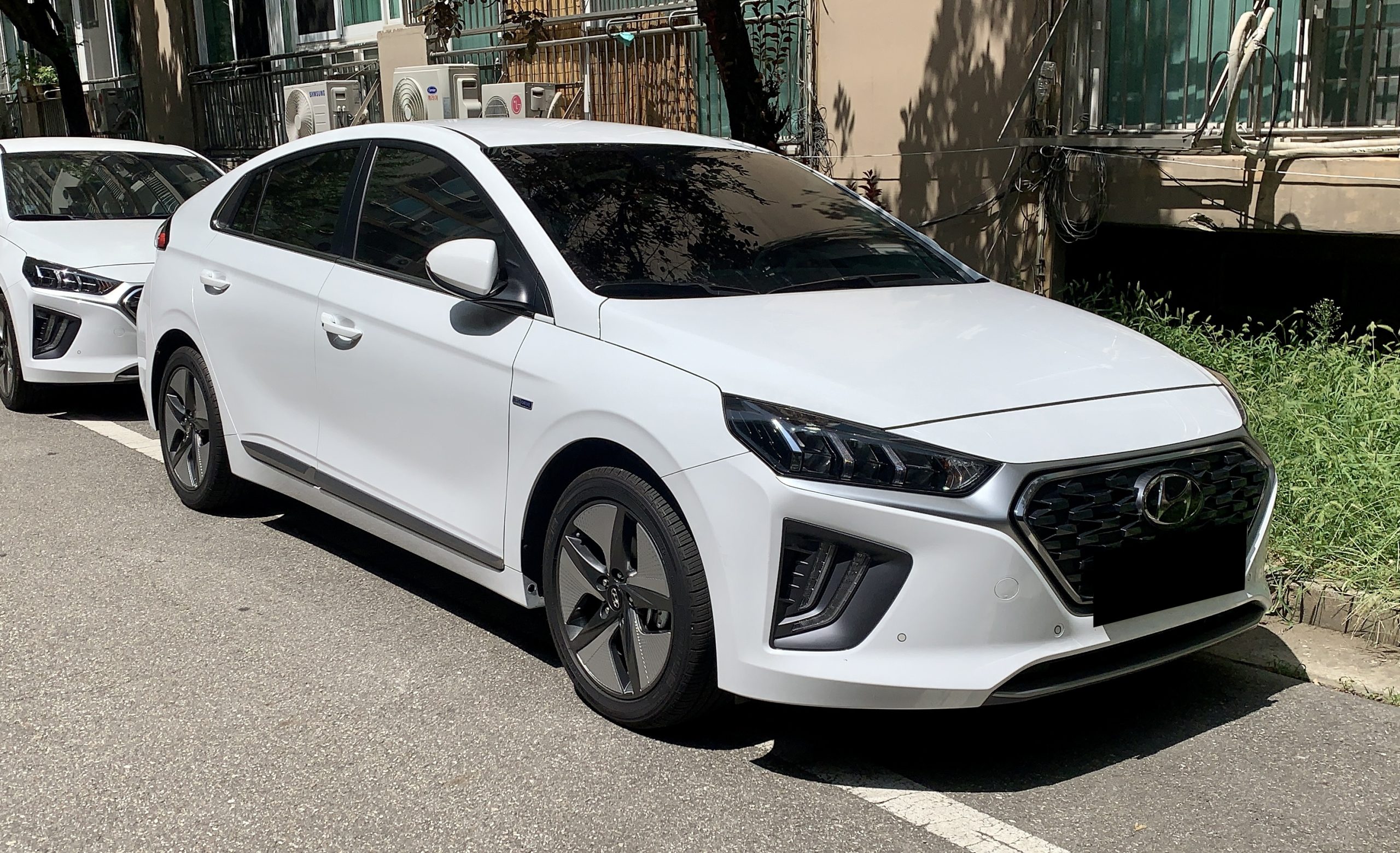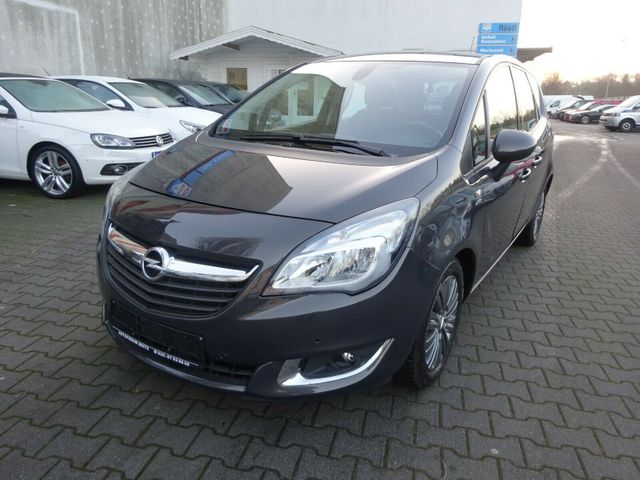
Hyundai IONIQ is the first hybrid step
Hyundai doesn't have the experience of making hybrid cars that Toyota does. The Koreans openly admit that IONIQ is only meant to pave the way for future solutions. Are we dealing with a prototype launched for sale or a full-fledged hybrid? We tested this on our first trips to Amsterdam.
While I'm talking about the hybrid in the introduction, and it's certainly the main item on Hyundai's new menu, it's not the only vehicle currently being launched. Hyundai has created a platform that serves three vehicles - a hybrid, a plug-in hybrid and an all-electric vehicle.
But where did the idea come from to take a hoe in the sun and try to threaten Toyota? The manufacturer is very good at taking such a risk, but, as I wrote earlier, hyundai ioniq primarily intended to lay a hybrid-electric trail for future models. Koreans see the potential in such solutions, see the future and want to start producing them earlier - before they believe most of the market turns green. The model introduced this year should be treated as a foretaste of what they can improve and - perhaps - really threaten Toyota in hybrid sales. A hybrid that Kowalski will choose at a certain stage of development. Prices for which will be similar to models with diesel engines, and at the same time will enchant you with low operating costs.
So is IONIQ really such a prototype? Can we predict the future of Hyundai hybrids based on it? More on that below.
Dany a la Prius
Okay, we have the keys to the IONIQ - all electric to begin with. What makes it stand out? Firstly, it has a plastic grill, devoid of any air intakes - and why. The brand of the manufacturer is surprising - instead of a convex one, we have a flat imitation printed on a piece of plastic. It looks like a cheap copy, but maybe it improves airflow. The drag coefficient here is assumed to be 0.24, so the car should actually be very streamlined.
When we look at its sideline, it actually looks a bit like a Prius. It's not some amazingly beautiful shape, you can't admire every crease, but the IONIQ looks good. However, I would also not say that he is something particularly stands out.
The hybrid model differs primarily in the radiator grill, in which, in this case, transverse ribs are traditionally placed. In order to obtain such a good air resistance coefficient, dampers are more and more popular behind it, which are closed depending on the need for cooling of the internal combustion engine.
Hyundai gave us a little zest. The electric model has several details, such as the lower part of the bumper, painted in copper color. The hybrid will have the same seats in blue. The same motives seep in.
Initially - and what's next?
Taking a seat in the electric cabin hyundai ioniq We are struck first of all by the bizarre way of choosing the driving mode. Looks like... a game controller? Hyundai said that since the transmission is electronically controlled anyway, the traditional lever can be removed and replaced with buttons. When the use of such a solution becomes a habit, it turns out that in fact it is both convenient and quite practical. Just remember the position of the four buttons.
In a hybrid, there is no such problem, because the gearbox is dual-clutch. Here, the layout of the central tunnel is more similar to other cars thanks to the installation of a traditional lever.
Hybrid and electric vehicles are a manifestation of our ecological approach to life. Of course, the reasons for choosing such vehicles vary, but the Prius made a career out of customers who wanted to contribute to improving the world's air quality in this way. IONIQ goes even further. The materials used in the interior are also environmentally friendly. The interior is finished with vegetable oil, a material based on sugar cane, volcanic stones and wood flour. Plastics are also a kind of ecological variety. If only naturally. When buying clothes and shoes from some manufacturers, we can find information that they are suitable for vegans - 100% natural materials, none of the materials are of animal origin. So Hyundai could designate its car.
Behind the wheel we find indicators displayed only on the screen. This allows us to customize the currently displayed information, we can choose a suitable theme and set of indicators. Although the prices are not yet known, it is known that the IONIQ should be somewhere between the hybrid Auris and Prius, that is, its price will not be lower than PLN 83, but not higher than PLN 900. Judging by the level of interior equipment, I think Hyundai will be closer to the Prius - we have dual-zone air conditioning, heated and ventilated front seats, heated outer rear seats, navigation, this virtual cockpit - all this is worth it, but can also be an excuse for a higher price on compared to the i119.
How about space? As for the wheelbase of 2,7 m - without any reservations. The driver's seat is comfortable, but the passenger in the back has nothing to complain about either. The hybrid model holds 550 liters of luggage, expandable to 1505 liters; The electric model has a smaller luggage compartment - the standard volume is 455 liters, and with the backrests folded down - 1410 liters.
moment with moment
Let's start with a car with an electric motor. This engine produces a maximum power of 120 hp. (to be precise, 119,7 hp) and 295 Nm of torque, which is always available. A full press on the accelerator pedal immediately starts the electric motor, and we begin to thank the traction control system for such an early reaction. In some situations, we really can't keep up with the speed of electricity. hyundai ioniq goes into full swing.
In normal mode, acceleration from 0 to 100 km / h takes 10,2 seconds, but there is also a sport mode that subtracts 0,3 seconds. The lithium-ion battery has a capacity of 28 kWh, which allows you to travel a maximum of 280 km without recharging. Burning looks interesting. We look at the part dedicated to the on-board computer and see 12,5 l / 100 km. At first glance, after all, “liters” are still kWh. How about charging? When you plug the car into a classic socket, it will take about 4,5 hours to fully charge the battery. However, with a fast charging station, we can fully charge the battery in just 23 minutes.
As for the hybrid model, it was based on the already well-known 1.6 GDi Kappa engine operating on the Atkinson cycle. This engine has a thermal efficiency of 40% which is amazing for any internal combustion engine. The hybrid drive develops 141 hp. and 265 Nm. Also in this case, the electric motor is powered by lithium-ion batteries, and not nickel-metal hydride, as in Toyota. Hyundai attributed this to the higher density of the electrolytes, which should improve performance, but whether such a solution is more durable than the Prius, no one could answer this question. However, Hyundai provides an 8-year warranty on these batteries, so you can be sure that they will work properly for at least this period.
The hybrid will drive at a maximum speed of 185 km / h, and it will show the first “hundred” in 10,8 seconds. Not a competitor, but at least fuel consumption should be 3,4 l / 100 km. In practice, it turned out about 4,3 l / 100 km. What is interesting, however, is the way in which the electric motor was mated to the internal combustion engine, and then the torque generated by them was transmitted to the front wheels. We don't have an electronic CVT here, but a conventional 6-speed dual-clutch automatic transmission. Its main advantage is much quieter operation than in such a variator. Most of the time, the noise matches what we heard in the electric version. The turnover keeps lower, and if it increases, then linearly. Our ears, however, are accustomed to the sound of engines going through the entire rev range. At the same time, we can drive dynamically and downshift before corners - while Toyota's electronic CVT may seem like the only right thing for a hybrid, it turns out that the dual-clutch transmission also works very well.
Hyundai has also taken care of proper handling. The hybrid IONIQ has multi-link suspension on the front and rear axles, while the electric one has a torsion beam at the rear. However, both solutions were so well tuned that this Korean is really pleasant and confident to drive. Similarly, with the steering system - there is nothing to particularly complain about.
Successful debut
hyundai ioniq this may be the first hybrid from this manufacturer, but you can see that someone has done their homework here. You absolutely do not feel inexperienced with this type of vehicle. Moreover, Hyundai has proposed solutions such as, for example, a variable degree of recovery, which we regulate with the help of petals - very convenient and intuitive. There are not too many of these varieties either, so you can feel the difference between them and we can choose the one that suits your current needs.
Where is the catch? Hybrid cars still occupy a niche in Poland. Only Toyota manages to sell those that are priced to match more powerful diesels. Will Hyundai value the IONIQ well? Since this is their first hybrid and their first electric car, there are concerns that research costs will have to be recouped somewhere. However, the current price range seems to be quite reasonable.
But will it convince customers? The car drives very well, but what's next? I'm afraid that Hyundai may be simply underestimated in our market, even imperceptibly. Will it be like this? We will find out.

